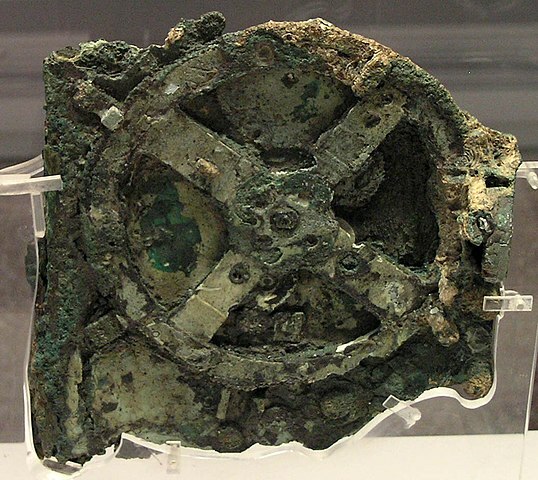History of Computing: The oldest computer might be older than you think!
By Fay Capstick
This week as part of our history of computing series we will look at the world’s oldest computer. It is probably a lot older than you would expect and has been entrancing scientists and historians ever since its discovery.
What is the world’s oldest computer?
The oldest computer, or computing mechanism, that has been discovered to date was found in a shipwreck off the Greek island of Antikythera in 1901. It is now known as the Antikythera mechanism and is kept in the National Archaeological Museum of Athens. The ship itself is believed to have sunk in 70-60 BCE. The mechanism was essentially an information processing device.
What is the Antikythera mechanism?
The Antikythera mechanism is a hand powered orrery dating to Ancient Greece. The fact it processes information makes it an analogue computer. It is purpose built for specific tasks and unlike a modern computer cannot be programmed to perform new tasks.
An orrery is a mechanical model of our Solar system that can show current positions of planets and moons and make predictions for further positions. The first one produced in modern times wasn’t until 1704, so the Ancient Greeks were well ahead in technological advancements.
It would have been operated by turning a small hand crank. Sadly this hasn’t been found.
What could it do?
The Antikythera mechanism could predict the positions of the plants (or rather the five ones that were known about at the time), the sun and moon by using mechanical calculations.
As well as these astronomical predictions, the mechanism could also predict eclipses. In 2008 it was reported that it could also track the 4 year cycle of athletic games.
So how old is it?
It has been dated to between 150 and 100 BC. For many years archaeologists did not realise its true significance as it was considered too complex to be real (https://en.wikipedia.org/wiki/Orrery). We now know that it is indeed real.
Roman writing tells us that Posidonius, a Greek polymath, had constructed a planetary model. This would likely have been the basis for the data that the machine would have used for its calculations.
What did it look like?
The mechanism, found in pieces with brass gears and inscriptions, was housed in a wooden box which was relatively small, under 34cm on its longest side. It would have been easily portable. Sadly, only a third of the mechanism survived.
In 2021 scientists attempted to re-create it using 3D computer modelling (https://www.bbc.co.uk/news/science-environment-56377567). They are next hoping to build a full scale working replica.
The complexity and miniaturisation of the components wouldn’t be seen again until the clocks of the 14th century.
Here is an image of part of the salvaged mechanism:

Why does this matter?
All history is important, but this find on a shipwreck is particularly important. It shows us how advanced ancient societies really were and challenges our assumptions of the past.
In relation to the history of computing, this mechanical calculator can be considered the world’s first computer. It shows us how even ancient societies used calculated information to help function in a more efficient manner.
Further, it is thought unlikely that the Antikythera mechanism was produced as a unique item. Therefore we can say it was the first commercially produced computer device.
Final thoughts
At Parker Shaw we have been at the forefront of the sector we serve, IT & Digital Recruitment and Consulting, for over 30 years. We can advise you on all your hiring needs. If you are looking for your next job in the IT sector please check our Jobs Board for our current live vacancies at https://parkershaw.co.uk/jobs-board.
Notes:
Main image is of a 2007 recreation of the mechanism
